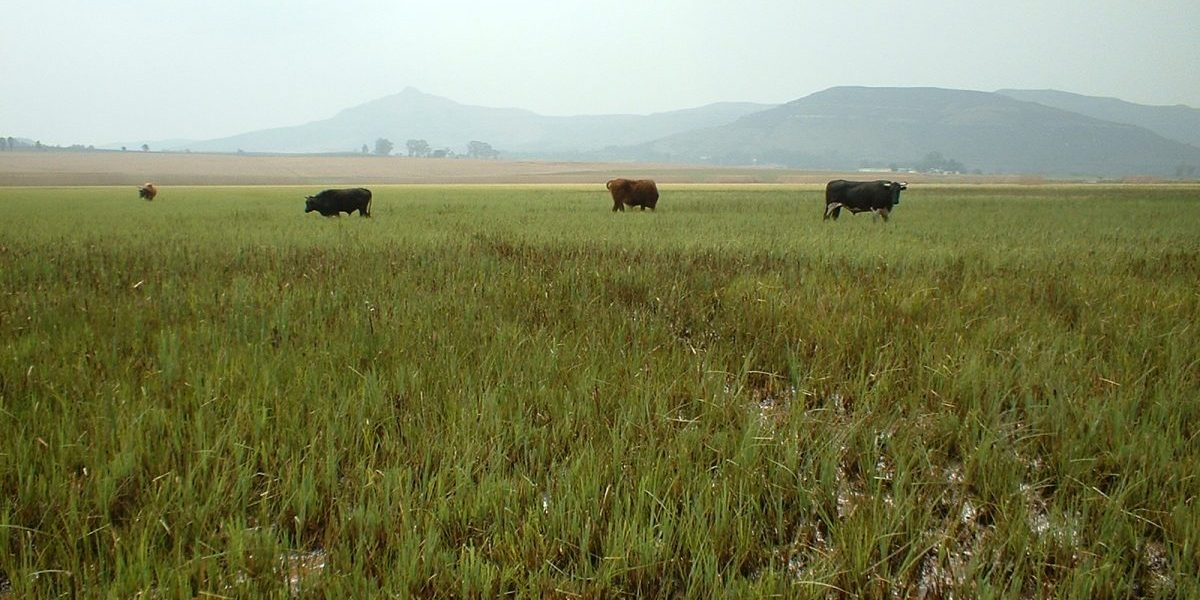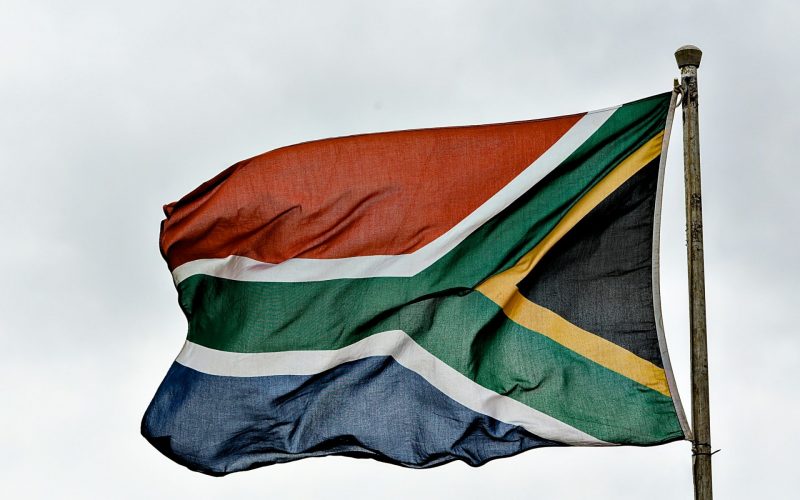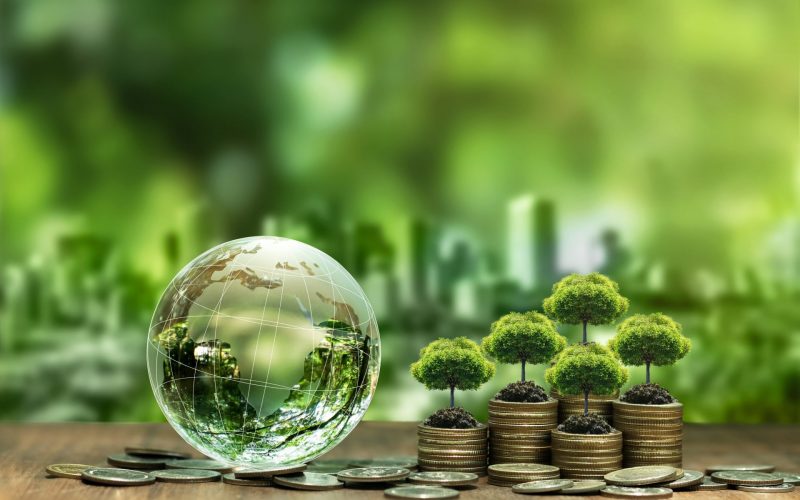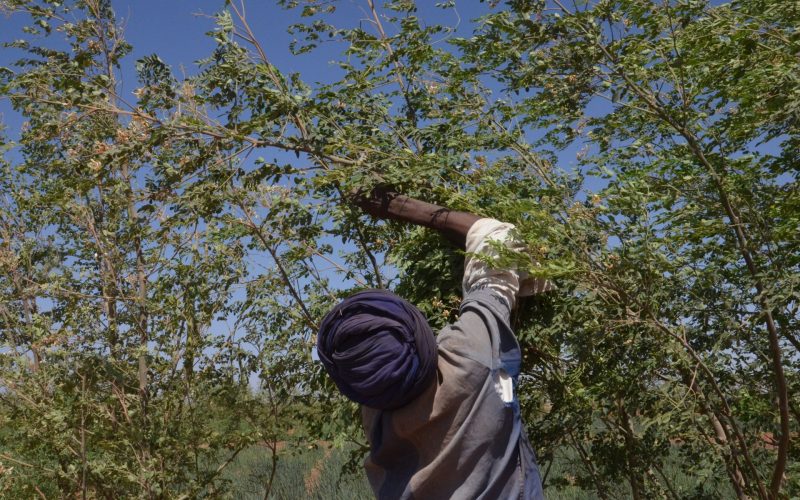Recommendations
- Ecological restoration of wetlands and other ecosystems should be well integrated with development planning (particularly for urban areas), agriculture and mining; all rapidly expanding in Africa.
- Ecological restoration must be underpinned by strong environmental protection – holding key role-players responsible for the required ecological restoration and its long-term monitoring, maintenance and aftercare.
- While governments have a critical role to play in directing and supporting ecological restoration, the restoration economy should not be overly dependent on donor and/or government funding at the cost of its own sustainability.
- Multiple funding streams should be sourced, targeting the key production sectors impacting on the wetlands, and, within each of these sectors, the value chain of that sector. This needs to be structured to support a circular economy, promoting a return of resources for wetland ecosystem management/restoration from those parties that benefit, directly and indirectly, from the ecosystem services provided by the wetlands.
Introduction: can the restoration economy help Africa ‘build back better’?
Across Africa, people are looking for hope, opportunity and security in the face of growing threats to society and the natural resource base on which we all depend. These threats are many and include over-extraction of natural resources, biodiversity loss, human disease, increasing climate extremes, unemployment and limited economic opportunities. Africa’s population has by far the highest proportion of vulnerable people globally. Their vulnerability to these multiple threats has intensified in the current COVID-19 pandemic, with its associated economic fall-out and widespread loss of jobs.
As ways are sought to recover from the COVID-19 pandemic, there is a growing call to ‘build back better’. This involves implementing approaches and stimulus packages that get national economies and individual livelihoods back on their feet. Building back better also entails supporting investment and behavioural change towards reduced ecosystem degradation and ultimately to a more resilient society.1Organisation for Economic Co-operation and Development, Building Back Better: A Sustainable, Resilient Recovery after COVID-19 (Paris, France: OECD, 2020), http://www.oecd.org/coronavirus/policy-responses/building-back-better-a-sustainableresilient-recovery-after-covid-19-52b869f5/; Nicholas King, “Key African priorities for a post-2020 global biodiversity framework” (SAIIA Policy Briefing No 195, South African Institute for International Affairs, Johannesburg, 2020), https://saiia.org.za/research/keyafrican-priorities-for-a-post-2020-global-biodiversity-framework/.Degraded ecosystems produce less food, store less water and carbon, and support less wildlife than healthy ecosystems.2Leah Gichuki et al., Reviving Land and Restoring Landscapes: Policy Convergence between Forest Landscape Restoration and Land Degradation Neutrality (Gland, Switzerland: IUCN, 2019).It is only with healthy ecosystems that people’s livelihoods can be enhanced, climate change counteracted, and biodiversity collapse averted – a recognition that led to 2021–2030 being declared the UN Decade on Ecosystem Restoration.
Ecological restoration is defined broadly as the process of assisting in the recovery of an ecosystem (eg, a wetland) that has been damaged/degraded and includes what is commonly referred to in South Africa as wetland rehabilitation. Allied with ecological restoration is the concept of the restoration economy, which refers to economic activity associated with planning and implementing ecological restoration projects. The restoration economy provides economic development for some rural areas. It can also enhance social networks, develop skills and connect people to natural environments.3Marisa Formosa and Erin Kelly, ‘Socioeconomic Benefits of a Restoration Economy in the Mattole River Watershed, USA,’ Society & Natural Resources 33 (2020): 1111-1128.
Working for Wetlands: some key enablers and constraints
Working for Wetlands was established in 2003 out of a recognition that, for a developing country such as South Africa, the goals of national development and caring for the natural environment are intimately linked.4John Dini, ‘Restoring Wetlands and Healing a Nation: South Africa’s Working for Wetlands Program,’ National Wetlands Newsletter 26 (2004): 7-10.By following the example of Working for Water (an earlier programme implemented by the government of South Africa) and adopting a poverty-relief approach to implementing wetland rehabilitation, financial resources were unlocked and political support attracted which would have otherwise been extremely difficult to secure. Since its establishment, Working for Wetlands has rehabilitated approximately 1 300 wetlands and employed 1 650 people per year.5John Dini and Umesh Bahadur, “South Africa’s National Wetland Rehabilitation Programme: Working for Wetlands,” in The Wetland Book, eds. C. Max Finlayson et al. (Dordrecht, The Netherlands: Springer, 2016).The programme has embraced a great diversity of wetland types and socio-economic and land-use contexts and has applied a diversity of rehabilitation techniques.6Donovan Kotze , Farai Tererai, Piet-Louis Grundling, ‘Assessing, with Limited Resources, the Ecological Outcomes of Wetland Restoration: A South African Case,’ Restoration Ecology, 27 (2019): 495-503.This provides the basis for some general lessons for ecological restoration, beginning with identifying some key enablers and constraints to the programme.
Four key enablers are identified. The first is the development of a shared vision amongst the political leadership of key ministries, mandated government departments, scientists/ practitioners and NGOs, from which political buy-in followed. The second is the establishment of a strong link between ecological restoration and poverty relief. This plays a central role in ensuring a sustained supply of funding for ecological restoration. By designing and implementing wetland rehabilitation as a labour-intensive process, access is gained to the government’s Expanded Public Works Programme funds earmarked for employment creation and poverty reduction.7Dini and Bahadur, “South Africa’s National Wetland”.The third is an operational model structured around semiindependent contractors and individual workers, who all receive vocational and life skills training through the programme. The fourth is the ongoing engagement between planners, practitioners and the scientific community in a process of shared learning explicitly designed to bridge the gap between science and practice. This encompasses workshops, field-learning events, foundational research and the development of science-based guidelines funded through the Water Research Commission.
While being a key enabler, the poverty-relief funding stream – upon which the programme so heavily depends – has important constraints. Firstly, poverty relief threatens to eclipse the ecological outcomes in terms of emphasis, project reporting and political attention. Secondly, within a large bureaucratic government programme, location has limited flexibility; the funding cycles that the programme needs to work within, for example, may often be out of synchrony with the best season for implementation; and the rigid finance, supply-chain and other procedures to which the programme must adhere are hindrances to working with partners at an operational level. Nevertheless, on occasions partners have taken responsibility for discrete components of a wetland rehabilitation project, such as a municipality providing materials and an NGO funding the development of the rehabilitation plan. Thirdly, most workers and contractors remain economically dependent on the programme rather than progressing to effectively generate income outside of the programme.8Matsobane Nkoko and Ian Macun, Rapid evaluation of the Socioeconomic Impact of Working for Wetlands (The Community Agency for Social Enquiry, Braamfontein, South Africa, 2005).The final constraint to be addressed is the insufficient attention given to organisational learning. This has resulted in the programme having difficulty adapting to rapidly evolving contexts and capitalising on emerging opportunities, particularly in terms of forging new partnerships and accessing additional funding streams.
Additional key lessons from Working for Wetlands and beyond
In addition to the enablers and constraints, some further general lessons are identified from experiences within Working for Wetlands as well as from outside the programme
Ecological restoration should align with how local people use and value the ecosystem. Sound social engagement is required to explore with local people and other key stakeholders how different restoration options might benefit (or disadvantage) the different parties. Additionally, such collaboration is required to determine who will be responsible for the maintenance and aftercare of the rehabilitated wetland. With insufficient engagement, it may easily emerge afterwards that the outcomes are opposed, with some parties even going as far as sabotaging the restoration interventions.
A solid base of trust is required. Look out for existing long-standing natural resource management initiatives trusted by local people to act as a conduit through which an ecological restoration project can be initiated. Without this, it may require a long lead-in period (sometimes, several years) to build trust and understanding before reaching the advanced planning and implementation stages of the project.
Planning should be holistic and catchment-wide. This provides a strategic, defensible way of directing effort to locations where it is most required. Otherwise, resources can be wasted on sites where the ecological outcomes per unit of investment are low. For benefits at the priority sites to be assured, this top-down planning needs to meet the bottom-up social engagement covered in the first two additional lessons above.
Addressing early-stage degradation is usually most cost-effective. Generally, ecological restoration is inherently expensive and the more advanced the degradation, the greater the resources and time generally required to achieve significant outcomes. Therefore, it is usually more cost-effective to focus on sites that are in the earliest possible stages of degradation. However, some highly degraded ecosystems may still be very important for supplying key ecosystem services which are in very high demand. These may require some intervention measures to maintain or enhance their functionality. This applies to many urban wetlands that are in great demand for water quality enhancement.
A sound understanding of the site and its context is foundational. Before undertaking advanced planning and implementation, it is critical to diagnose the key problems facing a site through understanding its biophysical and social context and its functioning and dynamics. Failure to develop this understanding may result in rehabilitation efforts that ‘fight against the site’ or neglect the underlying causes of degradation.
The need for monitoring and maintenance. Although most rehabilitation projects have finite lifespans and can be signed off as ‘complete’, restoration/rehabilitation is generally a longer-term process, during which maintenance activities are often required. Thus, longterm monitoring and maintenance are critical for identifying and timeously responding to issues before they develop into major problems which are potentially very costly to address.9Damian Walters et al., WET-RehabEvaluate Version 2: An integrated monitoring and evaluation framework to assess wetland rehabilitation in South Africa (WRC Report number 2344/1/19, Water Research Commission, Pretoria, South Africa, 2020).Local landholders are well located to carry out periodic checks of the site, and should – as far as possible – be involved in monitoring initiatives from the outset.
A mix of incentives and disincentives is generally required to address the factors causing degradation. An example where incentives have been significantly increased is the Meat Naturally initiative. This programme supports rural livestock owners in regenerative grazing and stock theft prevention and organizes mobile auctions and abattoirs to greatly improve market access. For some communities, such as in the Matatiele area of the Eastern Cape, this was a critical income source during COVID-19 lockdown.10Samir Randera-Rees, ‘Cash Cows in a Time of Corona’, WWF-SA, https://www.wwf.org.za/our_news/our_blog/cash_cows_in_a_time_of_corona/.In return, farmers commit to the sustainable management of the natural rangeland. For the disincentives, the focus is on supporting and strengthening existing grazing associations in their contribution to the governance of the natural resource base.
A country’s ecological restoration should not be overly reliant on public funds from the government. Contributions need to be encouraged from other sectors, particularly production sectors having major impacts on the natural environment. In South Africa, the plantation forestry sector – which was identified as a key impactor on wetland ecosystems – has made a considerable contribution to restoration efforts. Since 1998, there has been a substantial (>12 000 ha) withdrawal of timber plantations from within and immediately adjacent to wetland areas.11Jessica Cockburn et al., “Working Concept Paper: Defining the Resilient Landscapes Approach” (Mondi Wetlands Programme, WWF-SA, Cape Town, South Africa, 2014).This has resulted in a significant improvement in the health status of the affected wetlands. Other key sectors are irrigated agriculture and urban water users, with some representatives of these, such as Rand Water, having contributed to wetland rehabilitation in the catchment/s from which they are supplied with water. However, this contribution needs to be increased by identifying funding sources (such as derived from water tariffs) and exploring mechanisms (such as payment for ecosystem services or easement agreements) that facilitate investment by those who benefit from the restored ecosystem.12James Blignaut et al., ‘Restoring and managing natural capital towards fostering economic development: evidence from the Drakensberg, South Africa,’ Ecological Economics 69 (2010): 1313–1323; James Blignaut, ‘Making investment in natural capital count,’ Ecosystem Services 37 (2019).
Production sectors should include ecological restoration and maintenance as an integral part of their efforts to achieve a circular economy. This refers to an industrial/production economy that is restorative or regenerative by design. In addition to meeting current production demand, a circular economy seeks to invest in the long-term health of the ecosystem base on which production depends.13Ellen MacArthur Foundation, Towards the Circular Economy: Opportunities for the Consumer Good Sector (Cowes, United Kingdom: Ellen MacArthur Foundation, 2013), https://www.ellenmacarthurfoundation.org/assets/downloads/publications/TCE_Report-2013.pdf.This can be illustrated by an innovative pilot initiative within the dairy farming sector, where biomass from invasive alien black wattle, cleared from ecosystems under restoration near Kokstad in KwaZulu-Natal, is incorporated into livestock feed. Not only does this help to remove and manage an obstacle to the recovery of the natural vegetation, but when blended with other feed sources, the biomass provides a well-balanced diet for dairy cows.14Piers Kenyon, personal communication, 2021.Furthermore, milk from these cows is supplied to Nestlé, who invest back into the ecosystem restoration initiative, thereby contributing to meeting their environmental sustainability goals through shared value.
The responsibility for each sector extends throughout the supply chain, including producer, retailer, investor and consumer. In the plantation forestry example given, certification within the Forestry Stewardship Council provided South African forestry companies with access to large international markets. In return, these companies are required to adhere to environmentally acceptable management of their forest plantations (eg, in terms of the control of invasive alien plants).
Ecosystem rehabilitation/restoration has an important role to play within the mitigation hierarchy to avoid, minimise, rehabilitate and offset impacts. This has particular relevance for high-impact developments such as mining and requires a strong legal framework to drive compliance. Offsets are measures taken to compensate for the residual negative effects on biodiversity after every effort has been taken to minimise and then to rehabilitate.15Douglas Macfarlane et al., Wetland Offsets: a Best-practice Guideline for South Africa (Pretoria, South Africa: South African National Biodiversity Institute, 2014).In South Africa, wetlands have been rehabilitated within the operational areas of mines to enhance the wetlands’ capabilities to reduce water pollution levels arising from the mines. Zaalklapspruit is one example of such successful rehabilitation. The project, which was undertaken in partnership with Working for Wetlands, has contributed significantly to reducing metal pollution and water acidity arising from upstream coal mining activities.16Arno de Klerk et al., ‘The Effect of Rehabilitation Measures on Ecological Infrastructure in Response to Acid Mine Drainage from Coal Mining,’ Ecological Engineering 95 (2016): 463–474.Examples linked to urban developments in South Africa can also be found, such as the wetland rehabilitation that took place onsite as part of the Greater Edendale Mall development to ensure a ‘no net loss’ of wetland habitat integrity at the development site.17Damian Walters et al., “WET-RehabEvaluate Version 2”.
Conclusion: some possibilities for the African region
It is important to first recognise that although not considerable in number, a diversity of ecological restoration initiatives have been undertaken across Africa. One of these is the rehabilitation of the Logone floodplain in Cameroon. Following the construction in 1979 of an upstream dam, the floodplain suffered decreased annual flooding, significantly reducing the floodplain’s perennial grass production and the very valuable dry-season grazing that this provided for wildlife and livestock. However, water releases from the dam, specifically intended for reflooding of the floodplain, commenced in 1994 and resulted in a significant improvement in the perennial grazing it provided.18Paul Scholte et al., ‘Floodplain Rehabilitation in North Cameroon: Impact on Vegetation Dynamics,’ Applied Vegetation Science 3 (2000): 33-42.
The ecological restoration initiative from Africa with the most international recognition is the long-standing Green Belt Movement, in which disempowered, ordinary women plant trees in degraded forest areas of Kenya, and in so doing, find hope and power.19Wangari Maathai, The Green Belt Movement: Sharing the Approach and the Experience (New York, US: Lantern Books, 2003).The movement was conceptualised and initiated in 1977 by Wangari Maathai. Following the considerable growth and positive influence of this movement, which resulted in the establishment of more than 5 000 small nurseries and the planting of more than 30 million trees over a 30- year period, Maathai was awarded a Nobel Peace Prize for her visionary work. A more recent initiative is the Africa-led initiative of the Great Green Wall, which aims to expand ecological restoration across 8 000km on the southern edge of the Sahara Desert to improve the food security and welfare of millions living on this frontline of climate change.
Based on initiatives already taking place across Africa and on the experiences presented in this briefing, it is concluded that the restoration economy can certainly contribute to helping Africa ‘build back better’. However, it needs to be tuned to the specific realities of the region. In most African countries, public funds are generally limited and therefore large-scale public works programmes will not be the silver bullet for creating many green jobs. Instead, agriculture, mining and other key production sectors need to be drawn more into the ecological restoration economy as key contributors. Strong institutional and legal mechanisms – to hold the responsible parties accountable for sustaining long-term ecological restoration outcomes – will need to be put in place.
In addition, attention needs to be given to establishing jobs that support pre-emptive measures to prevent ecosystem degradation, which might include the following four ways.
- Environmental education and the early detection and response to sewage leaks and other pollution sources by trained local community members, such as the EnviroChamps initiative in KwaZulu-Natal, South Africa.20Jim Taylor and Liz Taylor, “Enviro-Champs: Community Mobilisation, Education and Relationship Building,” in Resilience by Design: A Selection of Case Studies (Bristol, UK: International Water Security Network, University of the West of England, 2016), 14.
- Monitoring of the ecosystem response to land use and management choices, such as that of the citizen technician–based monitoring of river sediment in the Tsitsa catchment in the Eastern Cape, South Africa.21Laura Bannatyne et al., ‘Design and Implementation of a Citizen Technician–Based Suspended Sediment Monitoring Network: Lessons from the Tsitsa River Catchment, South Africa,’ Water SA 43 (2017): 365-377.
- The early detection of and response to invasive alien plants that threaten biodiversity, water and agricultural resources.
- Additional measures to mitigate the impacts of infrastructural developments, such as installing porous pavements to reduce the increased flood risk caused by these developments.
Acknowledgement
This article draws on valuable discussions with: Charles Breen, Craig Cowden, John Dini, Gary Marneweck, Mbali Goge, Piet-Louis Grundling, Piers Kenyon, David Lindley, Heidi Muller, Samir Randera-Rees, Farai Tererai and Damian Walters and was proofread by Samantha Adey.
SAIIA gratefully acknowledges the support of SIDA for this publication.







